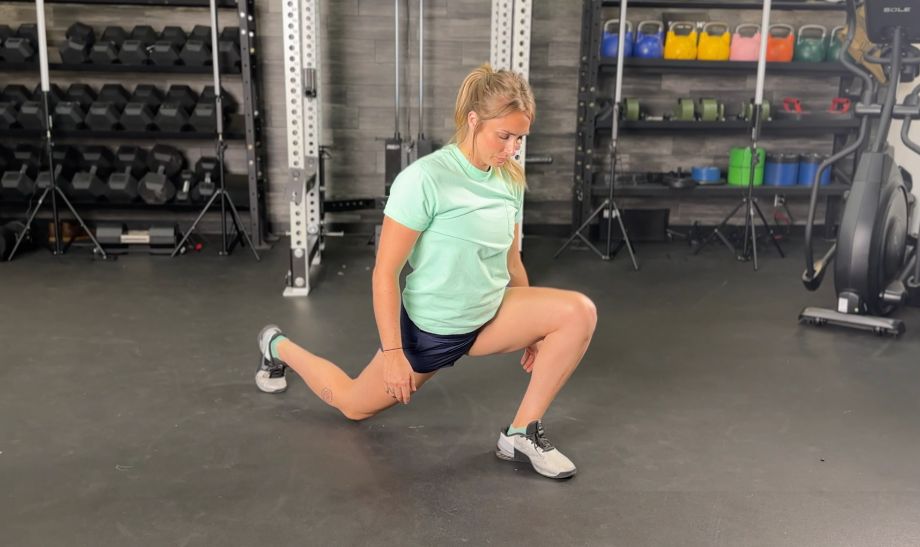We test and review fitness products based on an independent, multi-point methodology. If you use our links to purchase something, we may earn a commission. Read our disclosures.
Cardiovascular exercise raises your heart rate and blood flow and puts you into your target heart rate zone. Whether you have a busy schedule, need accessible cardio workouts, or want to simply learn how to do cardio exercises at home, we have you covered.
As a certified personal trainer (CPT), I have been taking people through heart-pumping, full-body workouts for years. This home workout guide will tell you why I recommend these bodyweight exercises and provide instructions for how to do them.
15 At-Home Cardio Workout Exercises
Keep in mind that there are modifications of each of these. Also, before starting any workout regimen, it’s best to consult with your physician, especially if you have health concerns or if you’re trying out a personal training app.
Jumping Jacks
Why Do Them:
Doing jumping jacks is an excellent way to start or improve your fitness. This plyometric movement is simple enough for beginners and can be used as warm-ups for those at advanced fitness levels. Jumping jacks get your heart rate up and are a weight-bearing exercise, which means they may help build bone density1. Tip: For a low-impact option, step one foot out at a time instead of jumping.
How to Do It:
Keep your core tight to reduce any strain on the low back. As you get comfortable and want to burn more calories, try speeding up the jumping jacks.
- Stand up tall with feet hip-width distance apart and hands by your sides.
- Jump your legs out wide past hip-width and bring your hands above your head to almost touch at the top.
- Take another jump to get your feet together and your hands by your sides again.
- Repeat and remember to inhale as you jump out and exhale when you bring the legs and arms back together.
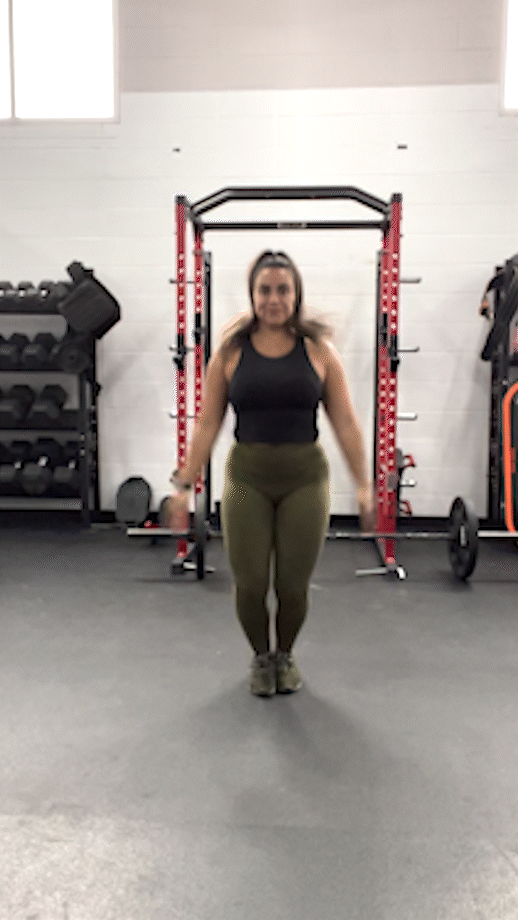
Jog in Place
Why Do It:
Jogging in place is a great alternative to running outside. It increases your heart rate and warms up the body for other activities. Plus, one study even suggests that running in place might improve your posture2.
How to Do It:
- The starting position is standing with your feet hip-width apart.
- As you lift your right foot, bring your left arm out in front of your body.
- Now switch to standing on the right foot and raise the left knee. Your right arm should be forward now, with the left arm back.
- Continue alternating feet and pumping your arms to start jogging in place.
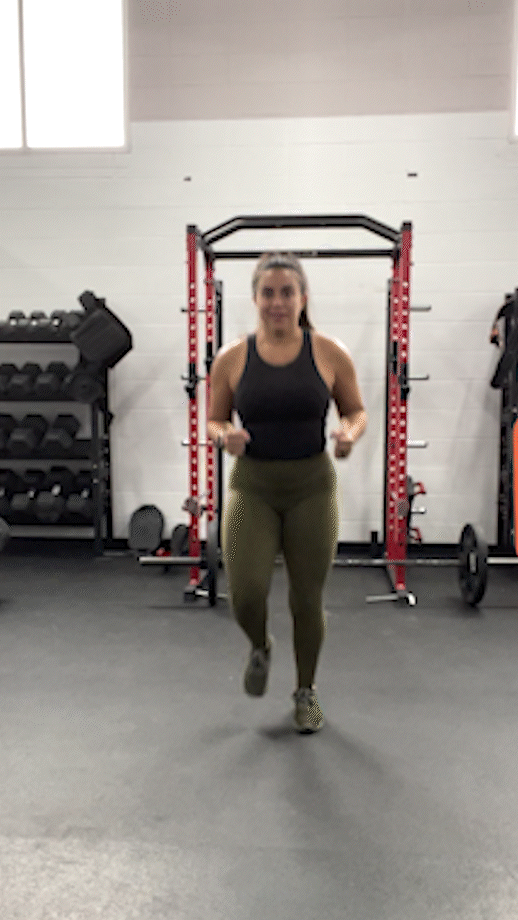
Lateral Shuffle
Why Do It:
A lateral shuffle, or side shuffle, can be fun, especially as a dynamic warm-up or an intense 30-second burst. What I really like about them is that they force you to move laterally, or side to side. This forces you to use muscles in ways you might not normally during your exercise routine, which can also challenge and improve your balance.
How to Do It:
- Stand with your feet hip-width distance apart.
- With bent knees, get into a low squat position.
- Staying in the squat position, shuffle a few steps to the right.
- Engage your core and bend to the right to touch your right shoe or the ground next to it.
- Repeat on the left side and continue.
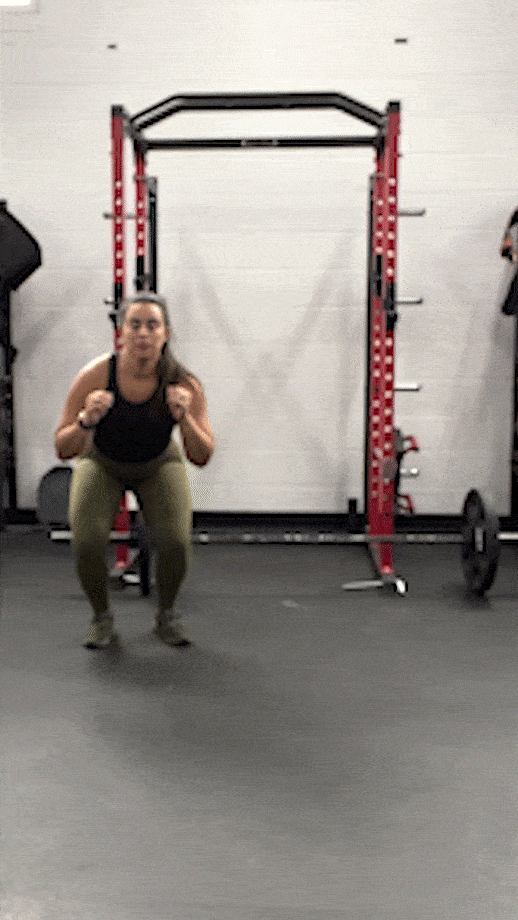
Lunges
Why Do It:
Lunges are good for balance and leg strengthening. They work your legs unilaterally, or one at a time. Isolating one leg means your dominant leg can’t compensate for your weaker one, which could correct imbalances and increase your overall strength.
How to Do It:
- Stand with your legs shoulder-width apart.
- Engage your core and take a step forward with the right leg.
- Your right (front) knee should be at a right angle directly above your foot.
- Lower your back left knee to tap the ground as you’re hovering in a lunge position.
- After the tap, push through that right front leg to bring you into a standing position.
- Now take a step forward with the left foot and repeat.
Strive to keep your torso upright throughout the entire workout to help avoid instability or injury.
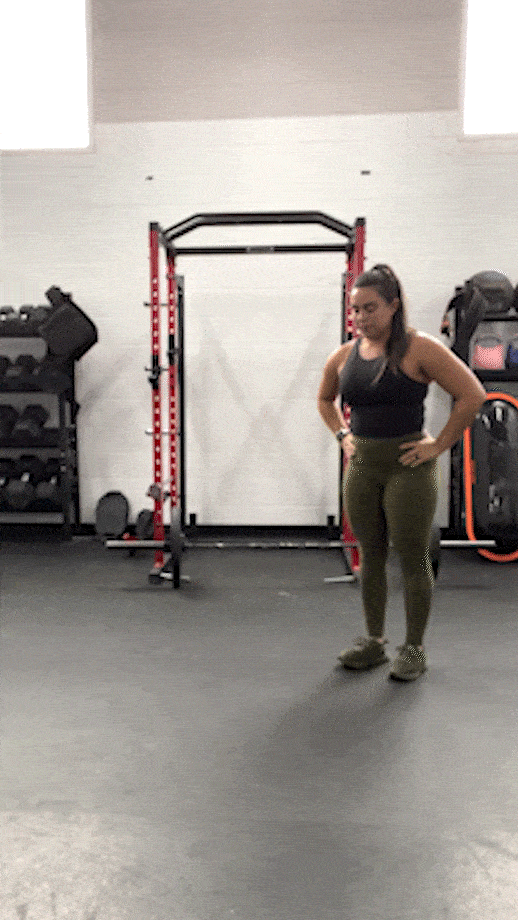
Jumping Lunges
Why Do It:
Want to kick those lunges up a notch? Jumping lunges are excellent for a high-intensity workout. However, they are more advanced than your typical lunges, and I only recommend trying them if you have good balance and movement on traditional lunges.
How to Do It:
- Stand tall with your legs shoulder-width apart.
- Engage your core and take a step forward with the right leg.
- Your right (front) knee should be at a 90-degree angle directly above your foot.
- Lower your back left knee to tap the ground as you’re hovering in a lunge position.
- After the tap, push through both feet into a big jump.
- During your jump, switch your legs so the left leg is upfront and the right leg is back.
- Bend the left knee at a 90-degree angle and tap the right knee on the ground.
- Jump again with a fluid leg switch and repeat.
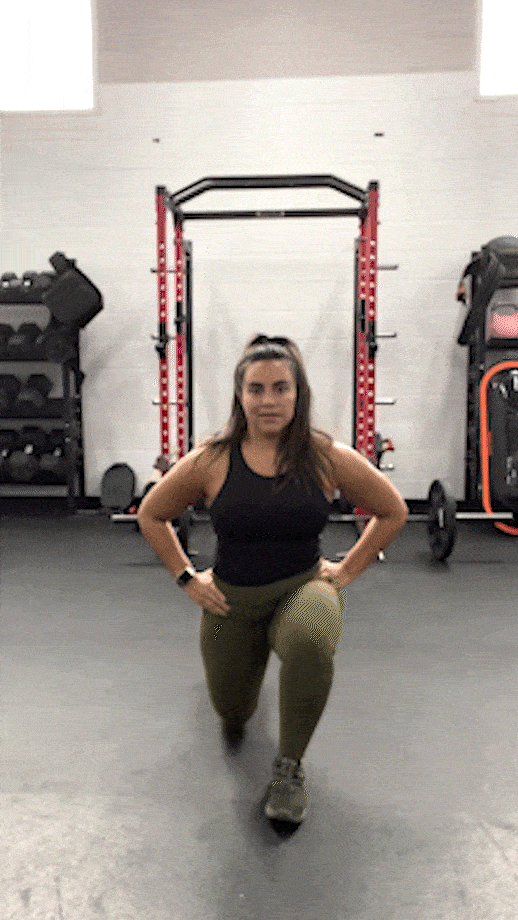
Standing Oblique Crunch
Why Do It:
Let me introduce you to a core-blasting cardio movement: the standing oblique crunch. Your obliques run along the sides of your core and play a role in flexing and rotating your trunk. Strengthening your core3 can improve coordination, balance, and overall power output.
How to Do It:
- Stand with your feet hip-width apart.
- With knees slightly bent and hands behind your head, shift your weight to the right leg.
- Use your right leg for stability as you bend your torso to the left, bringing the left knee up to meet your left elbow.
- Return to the starting position and finish the crunch on the right side.
- Repeat.
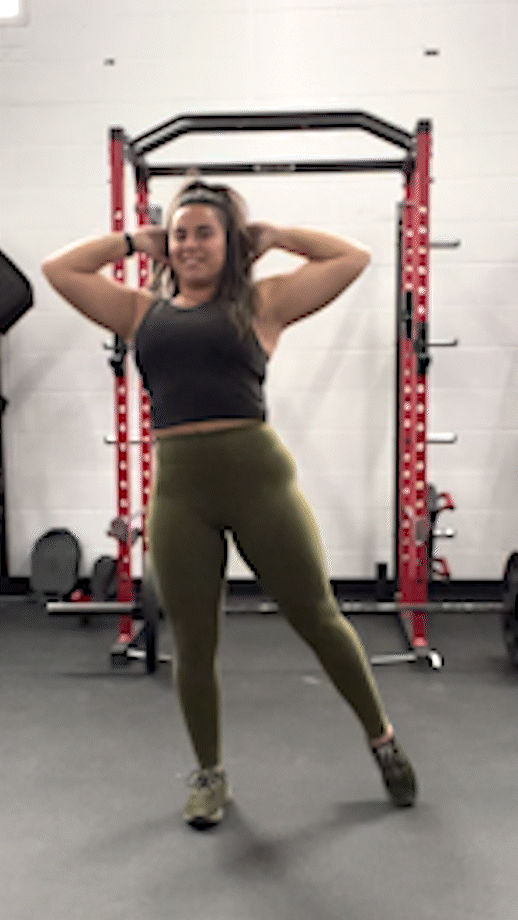
Burpees
Why Do It:
If you want a workout movement that works the entire body, burpees are hard to beat. They combine a hinge, a plank, a push-up, and explosive jumping. Tip: There are many modifications to the burpee. You can do them with a strict push-up, a belly flop, or no push-up at all. You can jump your feet back, or step them back. Find the modification for what works for your fitness level.
How to Do It:
- Get into a high-plank position with hands on the ground at shoulder-width distance apart.
- In the plank position, jump both your feet apart and back together.
- Do a push-up.
- Jump towards your hands with feet together.
- Explode up towards the sky and do a jumping jack.
- Put your hands on the ground, shoulder-width apart, jump the legs back and repeat.
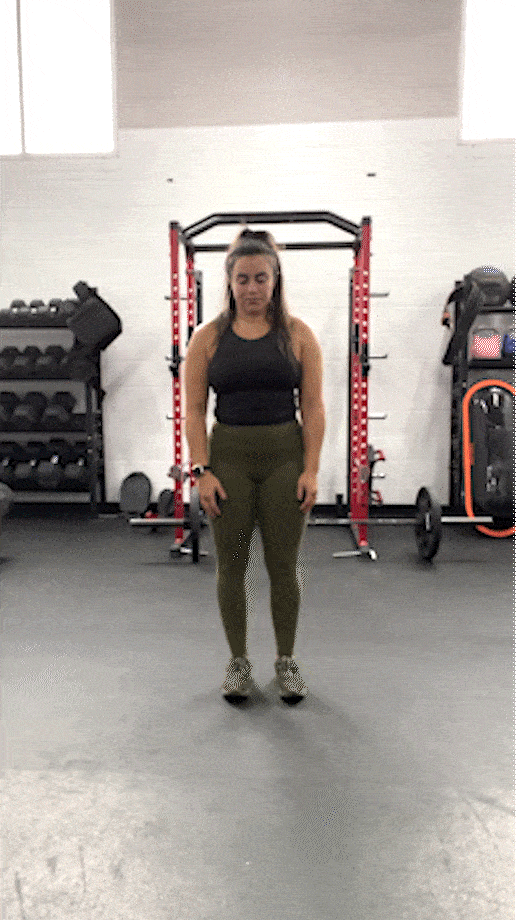
Mountain Climbers
Why Do It:
Feel your heart rate soar in this plank-position exercise. Mountain climbers target the core but are certain to also get you breathing hard. Tip: Beginners can start these with slowly tapping one foot at a time, gradually increasing speed as you get more comfortable in the movement.
How to Do It:
- Start in a plank position with hands shoulder-width distance apart.
- Keep your core engaged.
- Bring the left knee up towards the chest.
- Then bring your left foot back to meet the other. You’re back to the plank position.
- Bring the right knee toward the chest and then reset.
- Continue alternating legs.
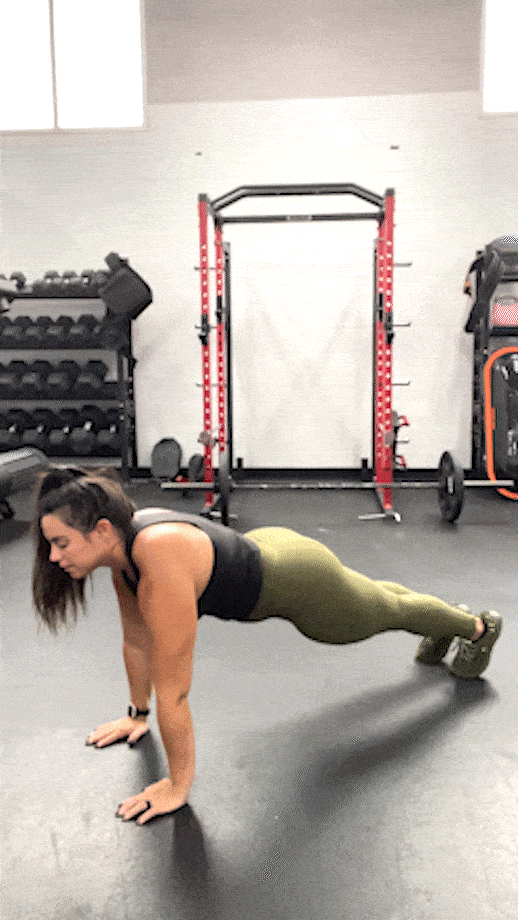
Skater Jumps
Why Do It:
Imagine you’re a professional speed skater flying to the finish line, shifting your weight side to side. This lower-body-focused exercise gives you explosive, endurance-building confidence while challenging coordination and balance.
How to Do It:
- Stand with feet hip-width apart.
- Take a jump to the right, landing on the right foot while the left leg sweeps behind you.
- Your left arm will come up at a 90-degree angle in front of your body and the right arm back behind you.
- Now jump to the left foot and bring your right arm up in front of your body. Let the right leg and left arm sweep behind you.
- Repeat jumping side to side on each leg until you look like a professional figure skater sweeping across the ice to gain speed.
For modification options, try jumping closer together, or even start with stepping one leg out at a time.
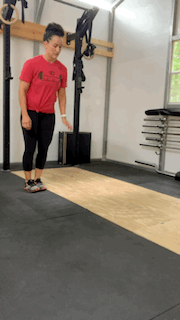
Squat Jumps
Why Do It:
If you want to work on explosive cardio exercises or work that lower body, squat jumps are a great option. A study from the Journal of Sports Science and Medicine4 found that squat jumps significantly improved leg strength, power, and endurance for sprints and other cardio.
How to Do It:
- Stand with your feet a little wider than hip-width apart.
- Bend your knees and go down into a low squat position. Your thighs should be parallel to the floor, and your knees.
- Explode through the squat by pushing through your heels and jumping high enough to get your feet off the ground.
- Return to the squat position as you land from the jump.
- It should feel like a fluid position from squatting and jumping to squatting again.
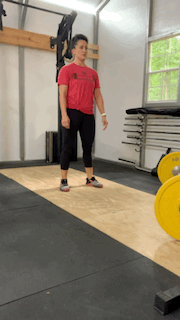
High Knees
Why Do It: Add high knees into your cardio workout to target the calves, glutes, hips, and quads. It is a go-to warm-up practice if you’re getting ready for a run or good to throw into a circuit workout.
How to Do It:
- Begin by jogging in place.
- Start lifting your right knee, then left knee, and back and forth as you jog.
- Your knee should be at a 90-degree angle, coming up to your waistline level.
Keep your core engaged as you hop between feet. If you want to incorporate the arms, try bending them at the elbow at a 90-degree angle and hovering your hands over your knees. Try touching your left knee to your left hand, or your right knee to your right hand. Another option is to pump your arms like you’re jogging or running.
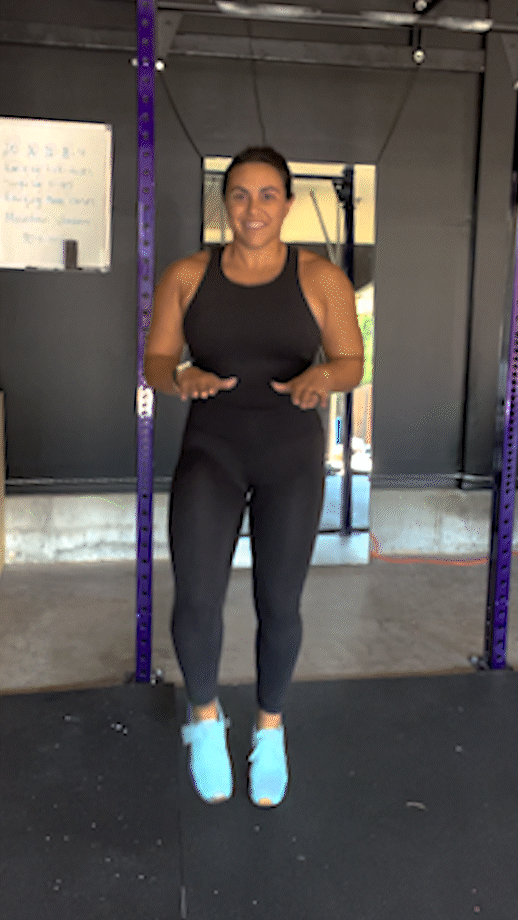
Butt Kicks
Why Do It: An excellent hamstring and quad cardio exercise, the butt kickers are a go-to-movement for warm-ups and HIIT. Think about staying on your toes and trying to actually get your heel to touch your bottom.
How to Do It:
- Start by jogging in place and let your arms pump by your sides.
- While jogging, bring the heel of your foot as close to your butt as possible.
- Continue alternating heel-to-butt kicks.
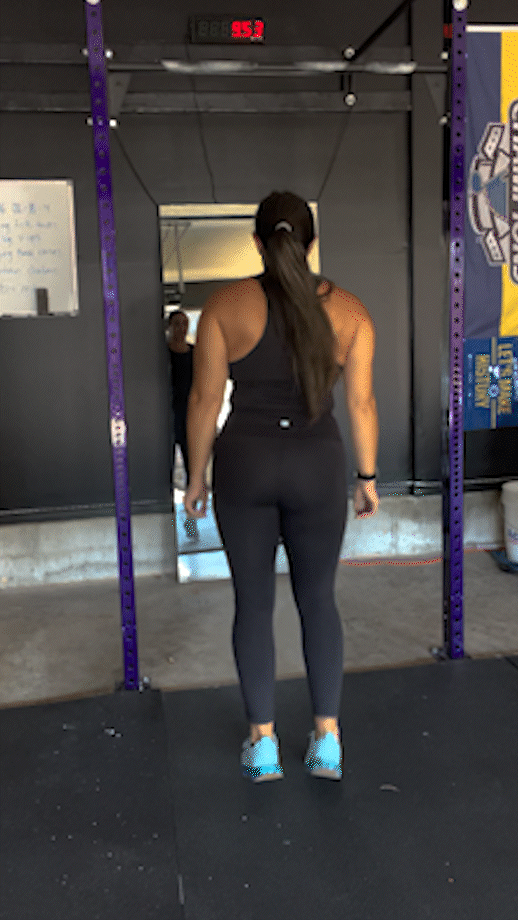
Jump Rope
Why Do It:
Jumping rope has significant benefits. You have the control to intensify your workout by jumping faster or switching up foot coordination. Jumping rope regularly has been found to improve cardiovascular endurance5 and, as a weight-bearing exercise, build bone density.
How to Do It:
- Hold a handle in each hand, rope behind you, and legs hip-width apart.
- Use your arms to swing the rope up and over your head.
- Jump as the rope comes over in front of you to clear it.
- Keep going with these jumps. If you’re feeling comfortable, try with alternative feet, criss-cross arms, or high knees.
RELATED: How to Jump Rope
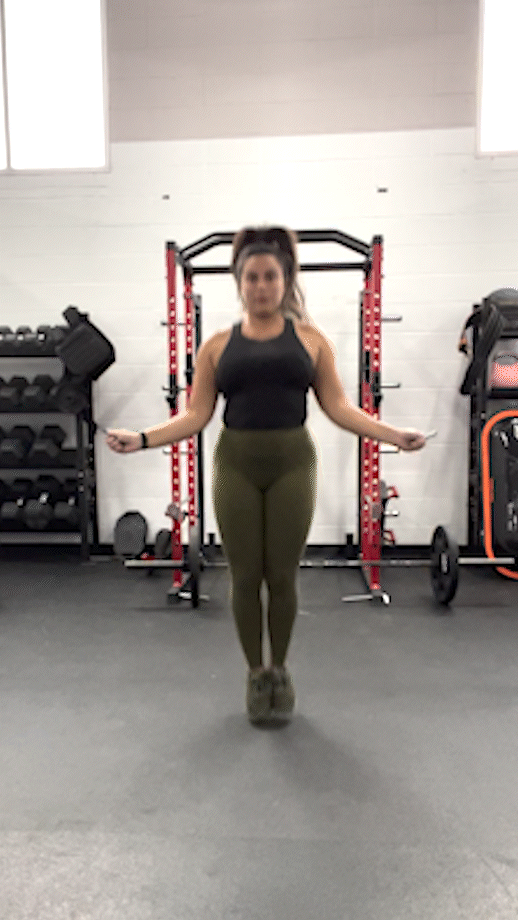
Toe Taps
Why Do It:
Toe taps are great for lower-body and core cardio exercises. Like most of these, you can choose to slow down or speed up to your preference.
How to Do It:
- Stand in front of a box or step between 6-12 inches high.
- Lift your right knee and tap the top of the step with your right toe.
- In a fluid motion, jump and switch feet.
- The right foot is on the ground, the left knee is up, and the left toe taps the step.
- Repeat.
When you have the hang of it, incorporate the arms by bringing the opposite arm forward than toe-tapping the step.
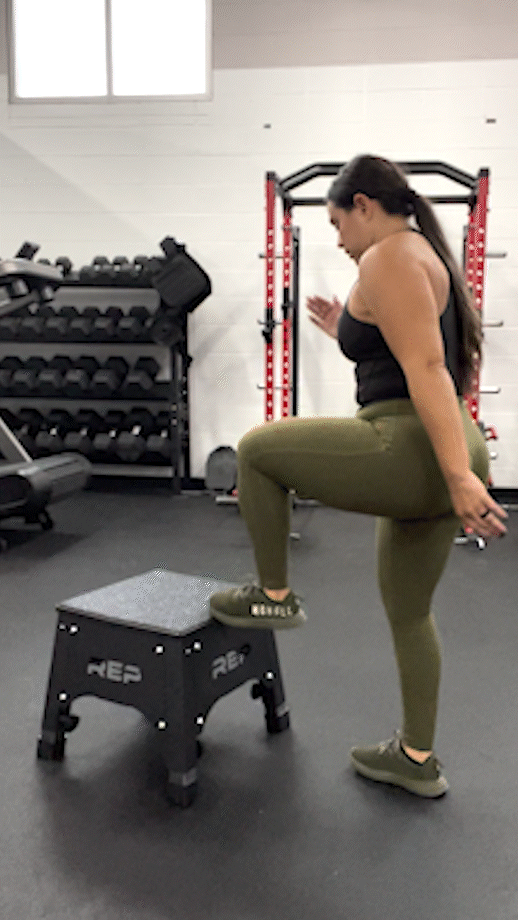
Broad Jumps
Why Do It:
As an explosive lower-body exercise, broad jumps help improve balance, coordination and build leg muscle. Use this exercise after jogging in place or jumping rope to get warmed up.
How to Do It:
- Stand with your feet shoulder-width apart
- With bent knees, lower yourself into a half squat while keeping your spine neutral.
- Push off your heels and swing your arms forward to help you jump as high and far as possible.
- Repeat.
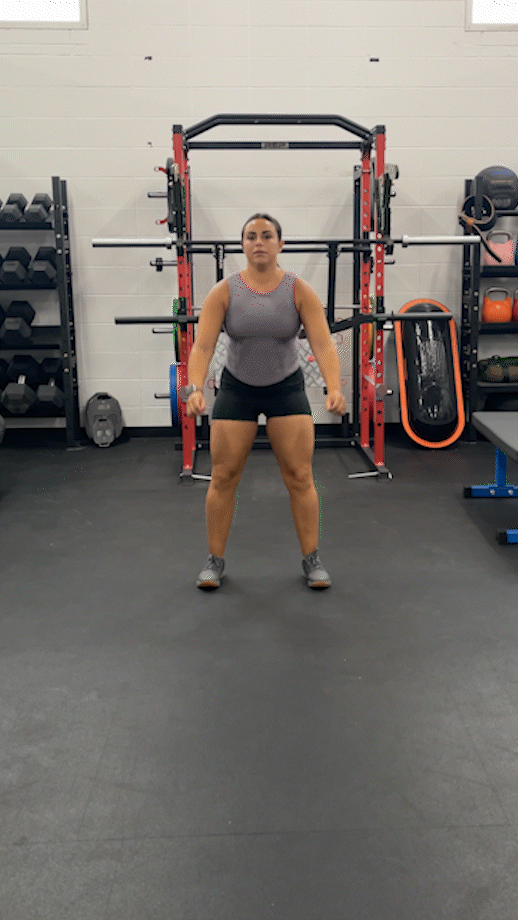
Cardio Exercises at Home: Q&A
How can I do 30 minutes of cardio at home?
The best way to get 30 minutes of cardio at home is to set up your own circuit training or HIIT workout. These high-intensity sequences combine the earlier exercises with multiple reps and quick breaks.
For example, try the following:
– 30-second jumping jacks, 30 seconds rest
– 30-second butt kickers, 30 seconds of rest
– 30-second mountain climbers, 30 seconds rest
– 60 seconds jogging in place, 30 seconds rest
– 30-second burpees
Break for 2-3 minutes and repeat the cycle four more times.
Which cardio burns the most fat?
Anaerobic exercises like HIIT workouts are great for burning fat and calories.
Can cardio be done at home?
Yes, cardio can be done at home, outside, at the gym, and in your garage. All you need to do a cardio workout is your bodyweight, though you can also invest in a bike, treadmill, rower, elliptical, or jump rope.
RELATED: Jumping Rope Vs Running
How do beginners do cardio?
If you’re new to cardio, it’s great to take it slow as you learn what aerobic activities you enjoy, including walking, cycling, or rowing. Start with a light warm-up, do 10 to 15 minutes of aerobic activity, and then a cool down with stretching. You can gradually increase the amount of time you do an activity as you get fitter.
References
- Harvard Health. Slowing bone loss with weight-bearing exercise. April 2021.
- Cho, M. Effects of running in place accompanied by abdominal drawing-in on the posture of healthy adults. J Phys Ther Sci. 2015 May; 27(5): 1613–1616. Published online 2015 May 26. doi: 10.1589/jpts.27.1613
- Mayo Clinic. Core exercises: Why you should strengthen your core muscles. [September 22, 2023]. In: The Mayo Clinic. [Internet]. [October 2023].
- Marián V, Katarína L, Dávid O, Matúš K, Simon W. Improved Maximum Strength, Vertical Jump and Sprint Performance after 8 Weeks of Jump Squat Training with Individualized Loads. [August 5, 2016]. J Sports Sci Med. 2016;15(3):492-500. [October 2023].
- Kirthika, V., et al. The Effect of Skipping rope Exercise on Physical and Cardiovascular fitness among Collegiate Males. October 2019 Research Journal of Pharmacy and Technology 12(10):4831-4835 DOI:10.5958/0974-360X.2019.00836.9
Further reading

If you’re getting noise complaints from the neighbors or roommates about your garage gym, here’s some solutions on how to soundproof a home gym. Read more

Cardiovascular exercise raises your heart rate and blood flow and puts you into your target heart rate zone. Whether you have a busy schedule, need accessible cardio workouts, or want to simply learn how to do cardio exercises at home, we have you covered. As a certified personal trainer (CPT), I have been taking people through heart-pumping, full-body workouts for years. This home workout guide will tell you why I recommend these bodyweight exercises and provide instructions for how to do them. » Read more about: The Best Cardio Exercises at Home, From a Personal Trainer » Read more

Curious about the relationship between exercise and stress? Here’s what the current research from our fitness experts has to say. Read more

Looking for an alternative exercise to build lower body muscle while improving your cardio? The training experts at GGR break down the sled push workout. Read more

